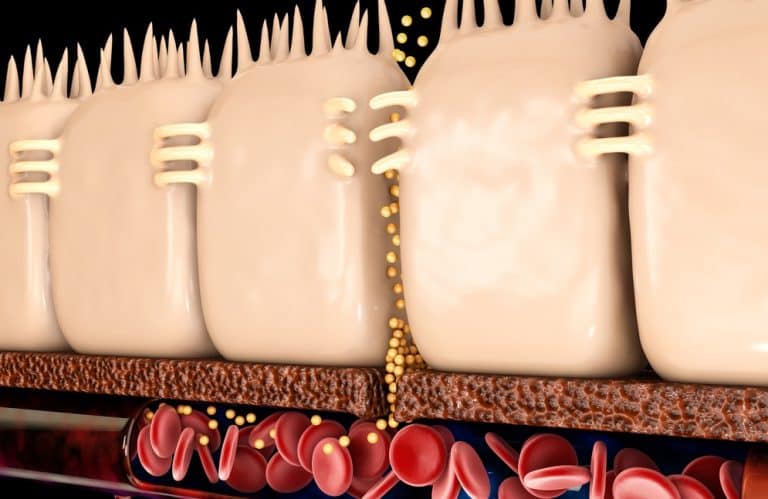What Are the Best Probiotics for Candida?
Vaginal itching and frequent urinary tract infections sound a little too familiar for comfort? Then chances are you’re one of many, many people who are affected by Candida.
According to researchers at Rice University, Candida is a systemic fungal infection that’s very common in humans, affecting around 70% of all people.
In case you’re wondering how so many people have managed to “get” Candida – here’s the interesting thing about this fungus: everybody has Candida.
Yup, Candida is naturally found in everyone’s body, usually in the mouth and intestines. And in small amounts, it actually serves a useful purpose by helping with digestion and nutrient absorption.
The problems only arise when there is excess growth of Candida. When it is overproduced, it breaks down the intestinal wall and penetrates the bloodstream, releasing toxic byproducts into your body and causing a wide range of unwanted conditions like:
- Skin and nail fungal infections
- Bad breath
- Exhaustion
- Digestive issues like gas, bloating, constipation, or diarrhea
- Vaginal infections, urinary tract infections, rectal and/or vaginal itching
- Brain fog, difficulty concentrating, poor memory, and lack of focus
- Skin conditions like eczema, psoriasis, hives, and rashes
- Sinus and allergy issues
- Strong cravings for sweets
- Hormone imbalance
If you have a great immune system and a healthy gut full of beneficial bacteria, your body won’t have an issue keeping Candida at bay. But it can overgrow when your system is altered or challenged. Using antibiotics is a common cause since they reduce the number of good bacteria in the body along with the bad.
In addition, eating too many foods that feed yeast in the body can encourage the growth of Candida. Foods in this class include milk products, alcohol, peanuts, sugars, and simple carbohydrates.
There is hope, though! The most effective ways to treat Candida involve restoring the friendly bacteria in your gut that helps to keep Candida in check and healing your gut so that Candida can no longer enter your bloodstream.
You can do this simply by increasing your intake of probiotic-rich foods and adding the best probiotics for candida into your daily diet.
What Are the Best Probiotics for Candida?
As you may already know, there are many different types of probiotics out there! And while they’re all beneficial in their own way, different probiotic strains offer different health advantages. For example, there are probiotic strains good for oral health and others that are particularly good for preventing traveler’s diarrhea.
But you want to find probiotics that are specifically best for Candida, right? Here are the probiotic strains you’ll want to look for when choosing a probiotic.
Note: The probiotic you pick doesn’t have to contain all of the below probiotics strains. Because we all have different bodies and microbiomes, a particular strain that works great for one person may not work for another. Please use the below probiotics for Candida as a guide for choosing amongst the many, many probiotics out there.
Lactobacillus acidophilus
L. acidophilus is the most popularly used probiotic strain. Research has shown that it can enhance the immune system and shorten the duration of Candida overgrowth. That’s because when L. acidophilus comes in contact with food in the gut, it creates toxic byproducts, including lactic acid and hydrogen peroxide. These byproducts are deadly to Candida yeast.
Taking probiotics with L. acidophilus will also reduce the chance that the yeast overgrowth will happen again, making it an important addition to include in your diet even after getting rid of Candida overgrowth.
Saccharomyces boulardii
S. boulardii is a yeast itself and one of the best ways to fight Candida. It isn’t a colonizing yeast, meaning it won’t become a permanent resident of your digestive tract. However, a study has shown that it stimulates the production of an immune component in the gut. When these immunoglobulins are found in the gut, Candida will find it difficult to stick to the walls.
Some people are very sensitive to all types of yeast, and that includes S. boulardii. If you have this sensitivity, wait until after removing yeast from your diet for a month or so, so the hypersensitivity can die down. Then you can gradually introduce S. boulardii at low doses.
This can mean starting with just a half capsule a day before you build up to a full dose, which is about 10 billion organisms per day. S. boulardii helps create a more hospitable environment in the gut for friendly bacteria.
If you are also taking antifungal supplements to directly tackle your candida overgrowth, you can still take S. boulardii. However, take them a few hours apart, so the antifungals don’t kill the S. boulardii, as well.
Bifidobacterium bifidum
This is a very common “good” bacteria within the body. It is found in the small intestine and the colon. It also makes a home in healthy vaginas, which means those vaginas won’t have as many yeast infections.
B. bifidum competes directly in your body with overgrowth of Candida and yeast. Most people who have Candida infections have a low concentration of this good probiotic bacteria in their bodies.
Research has shown that Bifidobacterium bifidum can produce natural substances that kill off bad bacteria. As it fights yeast overgrowth, including Candida, it also decreases inflammation. This makes it a valuable weapon against yeast infections as well as overall immunity.
Lactobacillus Plantarum
This bacterium is responsible for the good bacteria in gut-healthy foods like kimchi and sauerkraut. It works exceptionally well in improving issues in the digestive tract. On top of that, it is immune to antifungals and quite valuable in treating Candida overgrowth.
When you supplement L. Plantarum, you are arming yourself with an excellent defense against inflammation. If you eat the standard American diet, you are probably not among the 25% of American adults who have L. Plantarum in your intestines. Once you supplement with it, you can not only fight off Candida overgrowth but prevent those nasty yeast infections from occurring in the future.
Lactobacillus casei
L. casei is commonly found in the reproductive tract, intestine, and mouth of humans. It is an excellent lactic acid producer, which kills off harmful bacteria and helps boost good bacteria production and balance pH levels.
This probiotic also regulates your immune system so that it can respond to harmful pathogens. This strengthens your immune response. Like L. Plantarum, it competes for nutrients with foreign pathogens, which naturally reduces their numbers.
L. casei also produce antimicrobial peptides, bacteriocins, and hydrogen peroxide, to help get rid of Candida in the body. In fact, research has found this probiotic to be even more effective than L. reuteri and L. acidophilus against Candida.
Bacillus coagulans
This particular probiotic strain is great for supporting overall vaginal health. One study showed that women taking B. coagulans every day had improvement in the pH level of the vagina, and 91% of patients found relief from their vaginal discomfort through the daily use of this probiotic.
Bifidobacteriam breve
This is among the major types of bacteria in infants, and it also is found in the vaginal tract, where it helps prevent Candida yeast overgrowth. It also relieves symptoms of IBS in the intestinal tract, including flatulence, bloating, and abdominal pain.
One particular study included B. breve as it assessed probiotics for their capacity to protect the body from systemic and mucosal Candida overgrowth. The number of Candida albicans was reduced significantly when the mice in the study were given B. breve and L. casei.
None of the probiotic types of bacteria prevented mucosal candidiasis completely, but they did decrease the severity of the Candida overgrowth.
Lactobacillus rhamnosus
Lactobacillus rhamnosus has been found to inhibit the growth of Candida albicans. This probiotic strain has also been found beneficial for a urinary tract infection and is thought to be protective against vulvovaginal candidiasis after using a vaginal epithelial cell. A high-quality probiotic supplement like this can help restore healthy bacteria in your intestine.
Lactobacillus reuteri
Lactobacillus reuteri has been found to have antifungal effects on Candida. It treats oral microbiota with probiotic bacteria. L. reuteri has also been found to reduce the Candida load in a vulnerable population and inhibits the growth of six pathogenic oral Candida species.
Preventing and Managing Candida
There are several things you can do to help minimize the risk of yeast overgrowth. Below, you will find a few things you can do to prevent and manage Candida.
Low Glycemic Protein Sources
When you choose to switch to low glycemic protein sources like beans and lentils, you will find that these foods are high in fiber and will act as a prebiotic to feed beneficial bacteria in the body. Additionally, it can also help maintain blood glucose to help keep yeast infections at bay.
Practice Good Hygiene
Good hygiene is also important, especially if you use medical devices like catheters, pacemakers, and other medical instruments and equipment. Sometimes even dentures and poor dental health can cause yeast to form biofilms.
Find the Source
If your yeast infection is on the skin, find the source. Most likely, you will find that it is at its worst in skin folds. Excess body weight, tight clothing, and sweat create ideal conditions for Candida overgrowth.
FAQ
You may still have questions about the best probiotics for Candida or what to expect. Read on below for more valuable information.
How Do Probiotics Help with Candida?
Now that we have listed the best probiotics for Candida, let’s take a closer look at how they can actually help. Depending on the probiotic strain you use, its effects can differ. Some strains will help inhibit the growth of Candida, while others will stop it from colonizing in our gastrointestinal tract. Still, others will produce antifungal substances that have been proven effective against Candida.
Can a stool test detect Candida?
Yes. A doctor can test stool for Candida. They start by taking a stool sample and then examine it under a microscope to look for Candida overgrowth. They will then incubate a small sample for a few days to observe yeast that can grow in the stool.
However, one of the most common ways to test for Candida is by testing for invasive candidiasis by procuring a blood sample from the infected body site and sending it to the lab. Once at the lab, researchers will see if Candida grows in the culture.
Is yogurt good for Candida?
Yogurt that contains helpful bacteria can help restore the healthy balance of yeast and bacteria found in the vagina. Lactobacillus, for example, can release hydrogen peroxide and kill Candida while also helping with a yeast infection.
Is turmeric good for Candida?
One of the active components found in turmeric is curcumin. This can effectively kill Candida yeast. Turmeric also contains antifungal properties.
Disclaimer: While our team of medical expert writers makes every effort to convey the correct, relevant, and most up-to-date information, you should never disregard advice given to you by your medical practitioner or delay seeking medical assistance because of something you have read on Gutsify or received in correspondence from Gutsify. Please refer to our Terms and Conditions.









